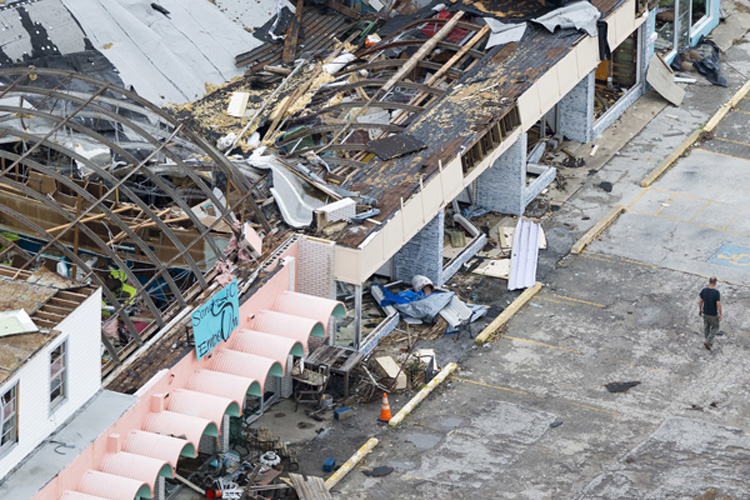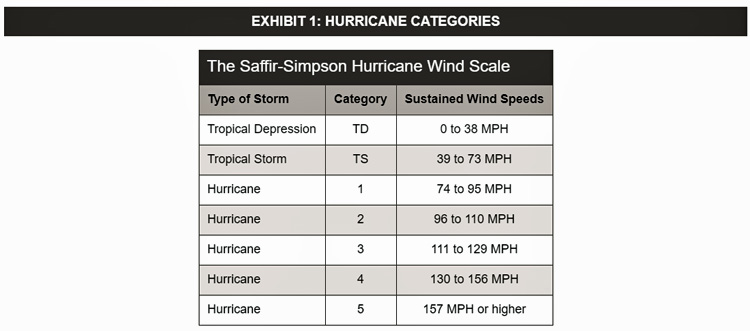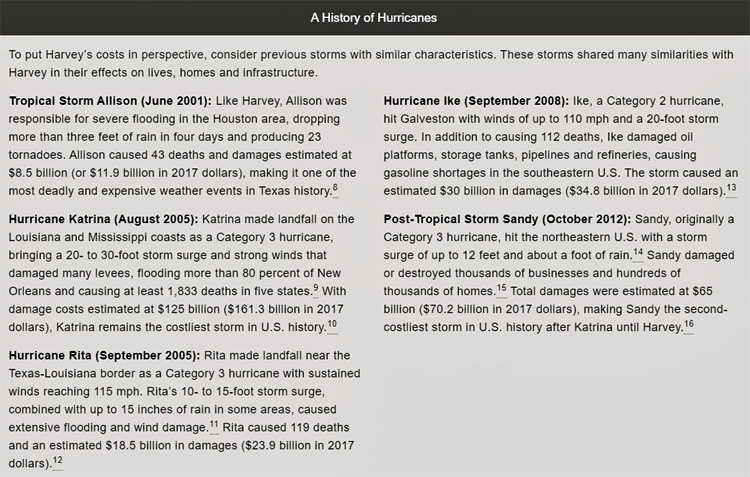
A Storm To Remember Part I: Hurricane Harvey And The Texas Economy – Introduction
Texans watched and waited anxiously as Hurricane Harvey approached our state. Born in the Atlantic Ocean as a tropical storm, Harvey intensified rapidly to a Category 4 hurricane in the Gulf of Mexico and hurtled directly toward the Texas coast.
Editors Note: This is part one of a five part series which will publish this week.
![]()
Late last August, Texans watched and waited anxiously as Hurricane Harvey approached our state. Born in the Atlantic Ocean as a tropical storm, Harvey intensified rapidly to a Category 4 hurricane in the Gulf of Mexico and hurtled directly toward the Texas coast.
On Aug. 25, 2017, Harvey made landfall, devastating Port Aransas, Rockport and other nearby communities with 130 mph winds and a six-foot storm surge. Swinging north, the hurricane moved into the Houston area, bringing thunderstorms and tornado’s that caused extensive damage.
Although it downgraded to a tropical storm as it moved inland, Harvey wasn’t through spreading havoc. The storm lingered in Texas for several days, bringing record-breaking rainfall and catastrophic flooding to the southeastern part of the state. Parts of the Houston metro area recorded more than 50 inches of rain in a four-day period, while inland communities such as La Grange, Bastrop and Smithville saw massive flooding as the Colorado River overflowed its banks.1
The Saffir-Simpson Hurricane Wind Scale classifies hurricanes and tropical storms according to their maximum sustained wind speeds (Exhibit 1). A “major” hurricane is defined as one at Category 3 or higher.

Once the danger passed, it was clear the hurricane had caused dozens of deaths and billions of dollars’ worth of physical damage to homes, buildings, vehicles and basic infrastructure in the affected areas.
Texans have weathered many major storms through the years, but Harvey — the strongest hurricane to hit Texas since Carla in 1961 — was particularly devastating.2 According to data collected by the Texas Division of Emergency Management as of Nov. 30, 2017, Harvey damaged or destroyed more than 178,400 Texas homes and inflicted an estimated $669 million in damage to public property such as government buildings, roads, bridges, water facilities and electric utilities.3 October estimates from the Texas Department of Motor Vehicles suggested flooding may have ruined from half a million to a million cars and trucks, although more recent estimates put the number at around a quarter-million vehicles.4
Harvey also exacted a high cost on many of the state’s industries. According to the Texas A&M AgriLife Extension Service’s most recent estimates, the storm caused more than $200 million in Texas crop and livestock losses.5 The coastal tourism industry suffered crippling damages, especially in Rockport-Fulton, where the Chamber of Commerce estimates winter tourism was down by 50 percent. Other economic sectors — particularly manufacturing, energy, chemical production and retail sales — suffered damage to structures and equipment and, in many cases, experienced significant and expensive downtime due to flooding, lost electrical power, employees’ inability to get to work and other situations causing temporary disruptions to the flow of goods and services.
Most businesses in the affected areas had to close in the immediate aftermath of the storm, although the period of lost production varied. Many encountered structural damage, floodwater, debris and downed utilities.
This is a preliminary analysis. We may not know the full impact of Hurricane Harvey for years. But the National Center for Economic Information has predicted Harvey will prove to be one of the most expensive natural disasters in U.S. history, perhaps second only to 2008’s Hurricane Katrina.6 The most recent estimate from the National Oceanic and Atmospheric Administration estimates Harvey’s total costs at $125 billion.7 Once actual damages and repair costs are determined, the cost may be even higher.
Although the losses stemming from Hurricane Harvey are enormous, they will be counteracted, to some degree, by economic activity — primarily reconstruction and repair — following the storm. To estimate the full economic change resulting from the storm, we must consider not only losses but gains.
![]()

This story and the photo’s were originally published by the State of Texas Comptroller.






